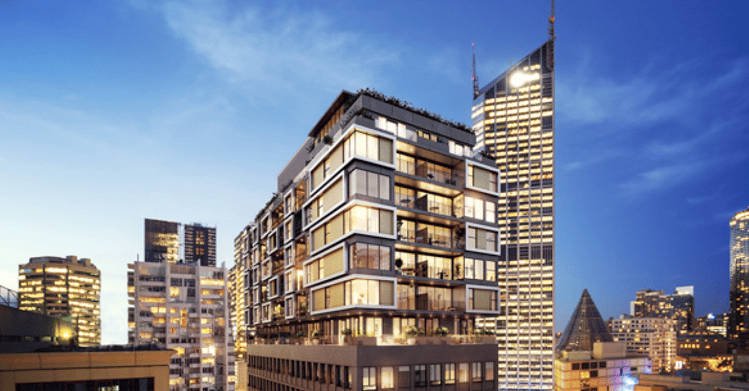Build an Environment with Sustainable Construction

The construction industry as a whole has a responsibility to contribute to the creation of a world that will improve the lives of future generations and make use of environmentally friendly construction methods.
At FRAMECAD, we understand the significance of sustainable construction, especially in the current landscape where urbanization is at a historic peak, driving up construction demand. Our modern construction method using cold formed steel (CFS) not only enables accelerated construction that requires less labor but also produces less material waste at the same time. It’s safe to say we’re passionate about creating a future for construction that’s more efficient and has less impact on the environment.
What is the significance of sustainable construction?
From energy consumption to carbon emissions, the construction industry has a significant environmental impact.
Today, the construction industry accounts for 36% of global energy consumption and 40% of global greenhouse gas (GHG) emissions. As the world becomes more focused on sustainability and green standards, construction has a big role in doing its part for the environment.
With ever-increasing sustainability expectations set by planners, building codes and regulations, the minimum for everyone in the construction industry is rising. With an increased focus on the environmental impact of every industry, an increasing number of construction projects will require demonstrably sustainable approaches to meet client expectations.
There is a lot of focus on ‘reducing the carbon footprint of construction,’ but it’s important to focus on all three pillars of sustainability, economic, environmental and social. Sustainable development requires us to focus on economic growth, social progress and promote environmental sustainability.
The move to sustainable methods of construction
For years, timber has been thought of as being the go-to method for construction as it’s seen by many as a natural and renewable material. But it’s not the best material to use when it comes to waste.
We spoke to Nick Collins from the Nation Association of Steel-framed Housing (NASH), who explained that only approximately half the timber in the plantation ends up being processed, and then only half of that again ends up as structural timber. “There’s an enormous amount of waste in the process that can’t be reused and so it ends up in landfill,” explains Nick. When considering that there is a high rate of decay in frames over the life of a timber building as well, there’s very little that’s positive about the timber sustainability story.
When looking at the 2022 WWF report ‘Everything from wood’, we can see how despite corporate commitment to implement zero deforestation in the past two decades, deforestation continues.
Steel, and CFS in particular, has quite a different story. Years of research has gone into developing sustainable construction methods, and in the past few years, carbon-free steel has become more commonly utilized by the construction industry. By using hydrogen as a fuel source, this can now give us an almost completely sustainable building material. Nick explains that the optimized use of carbon-free steel in the manufacturing process results in minimal waste which can then be reused and recycled. In some markets with renewable energy, the whole end-to-end process produces very low or even zero carbon emissions.
Read more about CFS as a sustainable building material.
Corporate Social Responsibility (CSR)
Another interesting part to consider throughout the sustainability journey are the end users themselves. What we’re seeing in the industry is that more and more end users are concerned with CSR which is a concept that businesses should have a positive impact on society.
While it’s a concept more commonly used for buyer behavior, it’s influencing the construction industry too. People are now choosing to purchase & live in homes or commercial buildings that are built with minimal waste and are more energy efficient. This then influences how we in the construction industry need to construct our world.
Programs for green building certification
The World Green Building Council is a global network comprised of around 70 councils across the world. There are various rating tools referred to as their certifications which are a primary way to show consumers and end users that steps have been taken towards more sustainability throughout construction.
There are numerous green building certification programs available globally – some are available internationally, while others are only available in specific countries. Not all programs are appropriate for all buildings or projects. The design team will need to carefully examine each program to determine which is best for individual projects.
BREEAM (BRE Environmental Assessment Method)
BREEAM is a global sustainability standard that aids in the improvement of buildings’ environmental performance. The Green Guide also evaluates the environmental impacts of materials over their entire life cycle.
LEED (Leadership in Energy and Environmental Design)
The Green Building Certification Institute manages the LEED program. It has been around for about 20 years and has played a significant role in the market shift that has made green buildings popular today. Many different types of projects can be certified, including homes, existing buildings, new construction, retail, core and shell projects. Certification levels range from Certified to Platinum.
Energy Star
While Energy Star isn’t a green rating as such, it’s an energy rating system with strict performance standards offered by the Department of Energy and the Environmental Protection Agency (EPA). Buildings must be at least 15% more energy efficient than traditional construction to qualify. The certification is valid for one year.
So, what does the future of sustainable construction look like?
While we can’t say for sure, the future of sustainable construction excites us at FRAMECAD. The industry has come so far in the past decade, with more ground to gain every day in our sustainability journey.
FRAMECAD is not only focused on sustainability for the construction industry and giving an alternative option to less-sustainable construction materials, but we also supply and onboard our partners with a fully sustainable construction solution to take construction and manufacturers on a journey.








